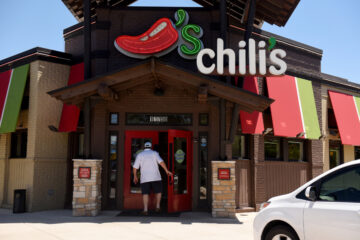While often unnoticed and unappreciated due to their isolation in the control tower, air traffic controllers have been at the center of the news over the last few days. The fatal crash between a Black Hawk military helicopter and an American Airlines (AAL) plane sent both aircraft into the Potomac River and killed all 67 people aboard has made air traffic control a major headline.
At a Jan. 30 press conference on the accident, President Donald Trump made baseless suggestions that the previous administration’s diversity, equity and inclusion policies indirectly led to the crash and that people who “do not have a great power of the brain” are being hired as air traffic controllers.
💸💰Don’t miss the move: Subscribe to TheStreet’s free daily newsletter💸💰
This is what is behind a California airport’s dispute with its air traffic controllers
In reality, the Federal Administration Administration (FAA) has previously published statistics showing that it is approximately 4,000 air traffic controllers short than it would like to have across the country’s airports — the job’s high-stakes nature and extreme level of concentration required make it especially difficult to find and train candidates.
Similarly to pilots and flight attendants, air traffic controllers also regularly fight for better wages and work conditions through job action. Oversight of the job at San Carlos Airport (SWL), a smaller regional airport 30 miles south of San Francisco International (SFO), was recently taken over by a new management company called Robinson Aviation.
Related: Reagan Airport to reopen after fatal American Air-Black Hawk crash
After Robinson Aviation refused to match the $18,000 cost-of-living stipend previously offered to air traffic controllers who need to live in San Francisco, the union representing the workers is continuing negotiations.
‘Preparing to bring in controllers from other towers across the country’
On Jan. 30, San Carlos Airport Manager Gretchen Kelly issued a statement saying that if the dispute is not resolved by the start of February, one measure could be to temporarily close the air traffic control tower at the airport.
“As a contingency, RVA is preparing to bring in controllers from other towers across the country to prevent an ATC-Zero (unstaffed tower) situation on Saturday,” the Robinson Aviation statement reads.
San Carlos Airport in San Carlos, Calif., is at risk of closure due to lack of air traffic controllers.
San Francisco Chronicle/Hearst Newspapers/Getty Images
As of Friday morning, the negotiations over payment terms continue as the airport explores back-up plans to bring in different air traffic controllers as current ones get placed on leave.
“Given these measures, we do not anticipate any lapse in air traffic control services on Saturday,” Kelly said in another statement.
More on travel:
American Airlines crash with U.S. Army copter leaves no survivorsTrump starts presidency with three executive orders affecting travelAnother country just issued a new visa requirement for visitors
While it runs some commercial flights to smaller U.S. cities, SWL is more commonly used by companies operating various emergency, medical and law enforcement flights. At any given time, the airport holds up to 500 planes and more than 25 aviation businesses.
Data from the FAA shows that a typical air traffic controller earned $137,380 in 2023 with the lowest 10% of earners earning below $76,190 and the highest 10% making more than $200,990. To apply to work as one, applicants need to be a U.S. citizen younger than 31 years of age, be registered with the U.S. military for the draft and have either one year of industry experience or a degree from a two- or four-year degree from an AT-CTI school.
Related: Veteran fund manager issues dire S&P 500 warning for 2025


